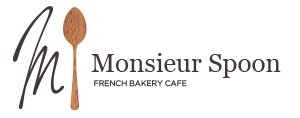1. Introduction: Extending the Conversation from Skill Recognition to Broader Creative Processes
Building upon the foundational idea that mirrors and repeats can enhance skill and recognition, it becomes essential to explore how these mechanisms influence the broader landscape of creativity and innovation. Observation and repetition are often seen as simple tools for mastering techniques, but their true power lies in their capacity to foster original thinking, inspire novel ideas, and drive breakthrough innovations. As we delve deeper, we recognize that these processes are integral not only to skill development but also to the dynamic evolution of creative thought.
a. How do observation and repetition influence the genesis of creative ideas?
Observation allows creators to absorb nuances, details, and patterns from their environment, providing raw material for innovation. Repetition, on the other hand, enables the subconscious mind to process and reorganize this information, leading to new associations. For example, a painter repeatedly studying the play of light in different settings begins to see patterns others overlook, which can spark innovative techniques or compositions.
b. Moving beyond skill enhancement: their role in fostering original thinking and innovation
Beyond mere mastery, observation and repetition serve as catalysts for creative breakthroughs. They create a mental environment where new ideas can incubate. For instance, innovators like Thomas Edison engaged in repeated experiments and keen observation, which eventually led to groundbreaking inventions. This iterative process encourages a mindset open to unexpected connections and novel solutions.
2. The Dynamics of Observation: How Perception Fuels Creative Insight
Perception is the foundation of creative insight. Not all observation is equally productive; mindful and intentional observation transforms passive viewing into active engagement. For example, the practice of “deep seeing” used by artists involves focusing intently on subtle details, which can reveal new perspectives and inspire original ideas.
a. What types of observation most effectively inspire new ideas?
- Focused observation: Concentrating on specific details to uncover hidden patterns.
- Peripheral observation: Noticing what lies outside the direct focus to find unexpected connections.
- Multisensory observation: Engaging multiple senses to enrich perception.
b. The importance of mindful observation in connecting disparate concepts
Mindfulness enhances awareness of subtle details and fosters the ability to link unrelated ideas. For example, the Surrealists used spontaneous and mindful observation to combine incongruent images, resulting in innovative art forms. This intentional focus sharpens perceptual acuity, opening pathways for creative synthesis.
c. How observational diversity enhances creative versatility
Exposure to diverse environments, cultures, and disciplines broadens perceptual frameworks. An architect inspired by natural forms, different cultural aesthetics, and technological innovations can develop more versatile and original designs. Research shows that diverse observation leads to higher creative fluency and adaptability.
3. The Power of Repetition: From Mastery to Innovation
Repetition is traditionally associated with skill mastery, but its role extends into the realm of innovation through iterative refinement. Repeated engagement with an idea or medium allows the subconscious to process and reconfigure information, often leading to unexpected breakthroughs.
a. How repeated engagement with an idea or medium can lead to unexpected breakthroughs
For instance, Beethoven’s iterative process of composing—revising and reworking themes—culminated in revolutionary musical structures. Similarly, in scientific research, repeated experiments often unveil phenomena not initially apparent, fostering innovation.
b. Differentiating between rote repetition and iterative refinement for creative growth
- Rote repetition: Mechanical repetition without change, often leading to stagnation.
- Iterative refinement: Systematic adjustments based on reflection, promoting growth and innovation.
c. The role of subconscious processing during repeated practice
Repeated engagement allows the brain to process information in the background, often resulting in insights during periods of rest or sleep. This phenomenon explains why many innovators experience ‘eureka’ moments after periods of intense repetition and reflection.
4. Observational Repetition as a Catalyst for Creative Fluency
Revisiting the same subject from different angles deepens understanding and opens new creative pathways. This process, known as observational cycling, strengthens neural connections and enhances associative thinking, leading to more fluid and original ideas.
a. Can revisiting the same subject from different perspectives unlock new creative pathways?
Absolutely. For example, Leonardo da Vinci’s detailed studies of anatomy, light, and perspective from multiple viewpoints allowed him to innovate in art and engineering. Such multidimensional observation fosters inventive synthesis.
b. How structured repetition enhances associative thinking
Implementing systematic variation—such as sketching the same object under different lighting or angles—builds a rich web of associations. This technique broadens creative horizons and enables the emergence of novel ideas.
c. Examples of artists and innovators who used observation and repetition to pioneer novel concepts
| Name | Field | Innovation |
|---|---|---|
| Vincent van Gogh | Painting | Repetition of brushwork to develop emotional depth |
| Marie Curie | Science | Repeated experiments leading to discovery of radioactivity |
| Charles Darwin | Biology | Repeated observations of species to formulate theory of evolution |
5. Breaking Patterns: How Observation and Repetition Prevent Creative Stagnation
While repetition can solidify skills, it risks leading to complacency if not managed properly. Recognizing when to introduce variability is crucial for ongoing innovation. Techniques such as deliberate variation, random prompts, or cross-disciplinary exploration disrupt monotony, fostering fresh insights.
a. Recognizing when repetition leads to complacency versus when it fosters innovation
Monitoring progress and seeking external feedback can signal stagnation. For example, if a writer finds their work feels repetitive or uninspired, incorporating new themes or styles can reignite creativity.
b. Techniques to introduce variability within repetitive practices
- Changing parameters or constraints periodically
- Applying random stimuli or prompts
- Cross-training in different disciplines
c. The importance of conscious reflection during repetitive cycles
Regular self-assessment and journaling help identify patterns of stagnation and opportunities for variation. Reflection ensures that repetition remains a tool for growth rather than complacency.
6. Cognitive and Neural Mechanisms Behind Observation and Repetition in Creativity
Neuroscience provides insights into how observation and repetition activate specific brain regions associated with creativity, such as the prefrontal cortex and associative networks. Neuroplasticity—the brain’s ability to reorganize itself—plays a vital role in transforming repetitive engagement into innovative thinking.
a. What does neuroscience reveal about how observation and repetition stimulate creative regions of the brain?
Studies using functional MRI (fMRI) show increased activity in the default mode network during creative tasks involving observation and mental rehearsal. These processes strengthen neural pathways that facilitate idea generation.
b. The role of neuroplasticity in developing innovative thinking patterns
Repeated exposure to new stimuli and reflective practice promote synaptic growth and network reorganization, making the brain more adaptable and receptive to innovative ideas.
c. How mental models evolve through repeated observation and engagement
As individuals repeatedly observe and engage with concepts, their mental models become more sophisticated, enabling them to synthesize disparate information into novel solutions.
7. Cultivating a Creative Environment: Practical Strategies
Creating environments that promote mindful observation and productive repetition involves intentional design. Incorporating diverse stimuli, encouraging reflection, and balancing routine with novelty are key to sustaining creative momentum.
a. How to design environments that optimize observation and repetitive exploration
- Providing varied sensory inputs and materials
- Designing spaces that promote focus and mindfulness
- Encouraging interdisciplinary interactions
b. The balance between repetition and novelty to sustain creative momentum
Implementing cycles of routine practice with intentional breaks for experimentation ensures steady growth. For example, an artist might refine a technique through repetition before exploring radical stylistic changes.
c. Incorporating feedback loops and reflection for ongoing creative development
Regular critique sessions, journaling, and self-assessment help refine observation and repetition practices, transforming them into powerful tools for continuous innovation.
8. From Observation and Repetition to Innovation: Synthesizing the Process
Deliberate practice that combines mindful observation with iterative repetition acts as a bridge to innovation. By learning from each cycle—assessing, adjusting, and experimenting—creators develop groundbreaking ideas. This process is exemplified across fields, from technological inventions to artistic revolutions.
a. How deliberate practice transforms simple observation into groundbreaking ideas
For example, the iterative sketching process employed by Pablo Picasso enabled him to explore multiple perspectives, leading to pioneering Cubist works. Such deliberate cycles of observation and refinement catalyze innovation.
b. The iterative nature of innovation: learning from repeated experiments
In scientific discovery, repeated testing and observation often uncover phenomena that challenge existing paradigms, driving scientific revolutions. Similarly, technological startups refine prototypes through cycles of observation and testing.
c. Case studies illustrating this transformation in various fields
- Design: Steve Jobs’ iterative product development process.
- Science: Watson and Crick’s repeated examination of X-ray diffraction images.
- Art: The evolution of Jackson Pollock’s drip paintings through repeated experimentation.
9. Revisiting the Parent Theme: Can Mirrors and Repeats Continue to Enhance Skill and Recognition?
Expanding upon the original question, it becomes clear that understanding observation and repetition as


